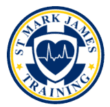Near drowning refers to a person that almost dies from not being able to breathe under water, wherein there is survival for more than 24 hours after incident.
Near drowning refers to an individual that almost dies from suffocation under water, usually fresh water or sea water. In other words, a person is not able to breathe as a result of being submersed under water. There is survival for more than 24 hours after the incident occurred. Near drowning is different from drowning where there is death within 24 hours from suffocation by immersion in a liquid.
According to Red Cross Canada (2003), there were 3,000 hospitalizations for near drownings from 1991 to 2000. Near drowning may occur in as little as a few inches of water. A study from Canada reported that inadequate adult supervision is the most significant factor of infants and small children drowning in the bath. Other factors involve co-bathing, use of infant bath seats and presence of other medical disorders that increase an infant’s risks of drowning. It is necessary to manage every near drowning situation, even if there are no evident complications. Complications may not develop until hours later, which can include, dry drowning and recovery syncope, among others.
Causes of Near Drowning
Cases of near drowning are typically accidents. The most common causes of near drowning include:
- Inability to swim or panicking while swimming
- Leaving small children unattended around bathtubs or any body of water
- Drinking alcohol while swimming or engaging in other activities that involve the water
- Falling through thin ice
- Head trauma or seizures while in the water
- Suicide attempt
Signs and Symptoms of Near Drowning
Although near drowning is dramatized as a loud, full of screaming scene in movies, this is often not the case. Most cases of near drowning do not have loud sounds, thus one must watch out for cases of near drowning in pools, lakes, rivers, beach, or anywhere there is a body of water. Some of the signs and symptoms of near drowning are the following:
- Uneven swimming motions
- Body is sinking or has sank, typically only the head is shown above water
- Cyanosis of the face, especially around the lips
- Cold skin and pale appearance
- Abdominal distention
- Chest pain
- No breathing/ rise and fall of chest
- Coughing with pink, frothy sputum
- Vomiting
- Confusion
- Irritability
- Restlessness
- Lethargy
- Gasping respirations
- Loss of consciousness
First Aid Management for Near Drowning
It is necessary to apply first aid in all cases of near drowning as it may just help save a life. Recommended steps for near drowning includes:
- Do not get into the water unless one is sure that it is safe and unless one knows how to swim. It will be harder to treat if there are more victims.
- If one is trained to swim and rescue people, do so. Otherwise, other steps may be done.
- Attempt to extend a long pole, fallen tree branch, or throw a rope with a buoyant object, such as life ring or life jacked, attached. After tossing to the person, attempt to pull the victim to the shore.
- If the victim is unconscious, check for circulation, airways and breathing. Initiate rescue breathing and CPR if necessary.
- Avoid turning or bending the neck.
- If there are other injuries, such as bleeding, apply first aid appropriately.
- Remove and wet, cold clothes from the person and cover with something warm, if possible, to avoid hypothermia.
Disclaimer: This article does not provide medical advice and should not be substituted for formal first aid training. The information given should not be used for self-diagnosis. Seek medical attention when necessary. It is important to recognise medical emergencies at all times to avoid complications from developing. To learn more about to how to manage near drowning, enrol in standard first aid training with a credible Canadian provider.
Sources:
Draper, Richard. (2011, May 23). Drowning and Near Drowning Patient Plus. Retrieved October 18, 2013, from http://www.patient.co.uk/doctor/Drowning-and-near-drowning.htm
Near Drowning. (2011, January 4). National Institute of Health. Retrieved October 18, 2013, from http://www.nlm.nih.gov/medlineplus/ency/article/000046.htm
